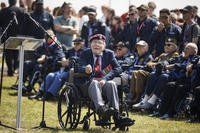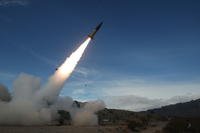Norway's defense department has asked its parliament to approve funding to purchase a dozen F-35A Joint Strike Fighter jets under a so-called block buy.
As part of its budget request for 2017, the Norwegian military asked for funding to purchase 12 more of the Lockheed Martin Corp.-made stealth fifth-generation fighters beginning in 2019. The government -- whose first four F-35s are currently at Luke Air Force Base in Arizona -- plans to buy a total of 52 of the aircraft.
If the request for a bulk order is authorized, Norway would become the first F-35 customer to enter into such a contracting arrangement. Separately, the Norwegian military is considering basing 300 U.S. Marines in the country to be able to better respond to Russian aggression in the region.
Joe DellaVedova, a spokesman for the F-35 program office, said Norway's announcement "was expected" and that other allies involved in the acquisition program are considering the contract as part of a plan to buy roughly 450 planes during a three-year period ending in 2020.
"Due to vast economies of scale, all countries will achieve significant reductions on the price of their jets," he said in a statement to Military.com. "The $80-85 million number often referenced for the cost of an F-35A in 2019 -- is right in the middle of the expected block buy."
The Defense Department, by far the biggest F-35 customer with plans to spend nearly $400 billion on almost 2,500 aircraft, also wants to participate in the block buy beginning in 2019.
While U.S. lawmakers have in the past supported similar arrangements on such weapons systems as the Virginia-class submarine and the Littoral Combat Ship, they haven't yet endorsed the idea for the F-35 program. Senate appropriators this year told the Pentagon's top weapons buyer, Frank Kendall, to further study the proposal.
A block buy is technically different than a multi-year procurement.
The latter has stricter requirements under the law -- for example, it can be approved only for a stable design -- and typically results in greater savings, estimated at between 5 percent and 10 percent, according to a July report from the Congressional Research Service.
The F-35 program, meanwhile, "has around 20 percent of development testing remaining, including complex mission systems software testing," according to an April report from the Government Accountability Office.
Coincidentally, two of the Norwegian F-35s were among those recently ordered to stand down due to peeling and crumbling insulation in cooling lines inside the fuel tanks.
The F-35 program office hired Rand Corp. to provide an independent assessment of the proposal and the research organization concluded the move could save the government "at least $2 billion" in part by purchasing key components in batches ahead of time.









